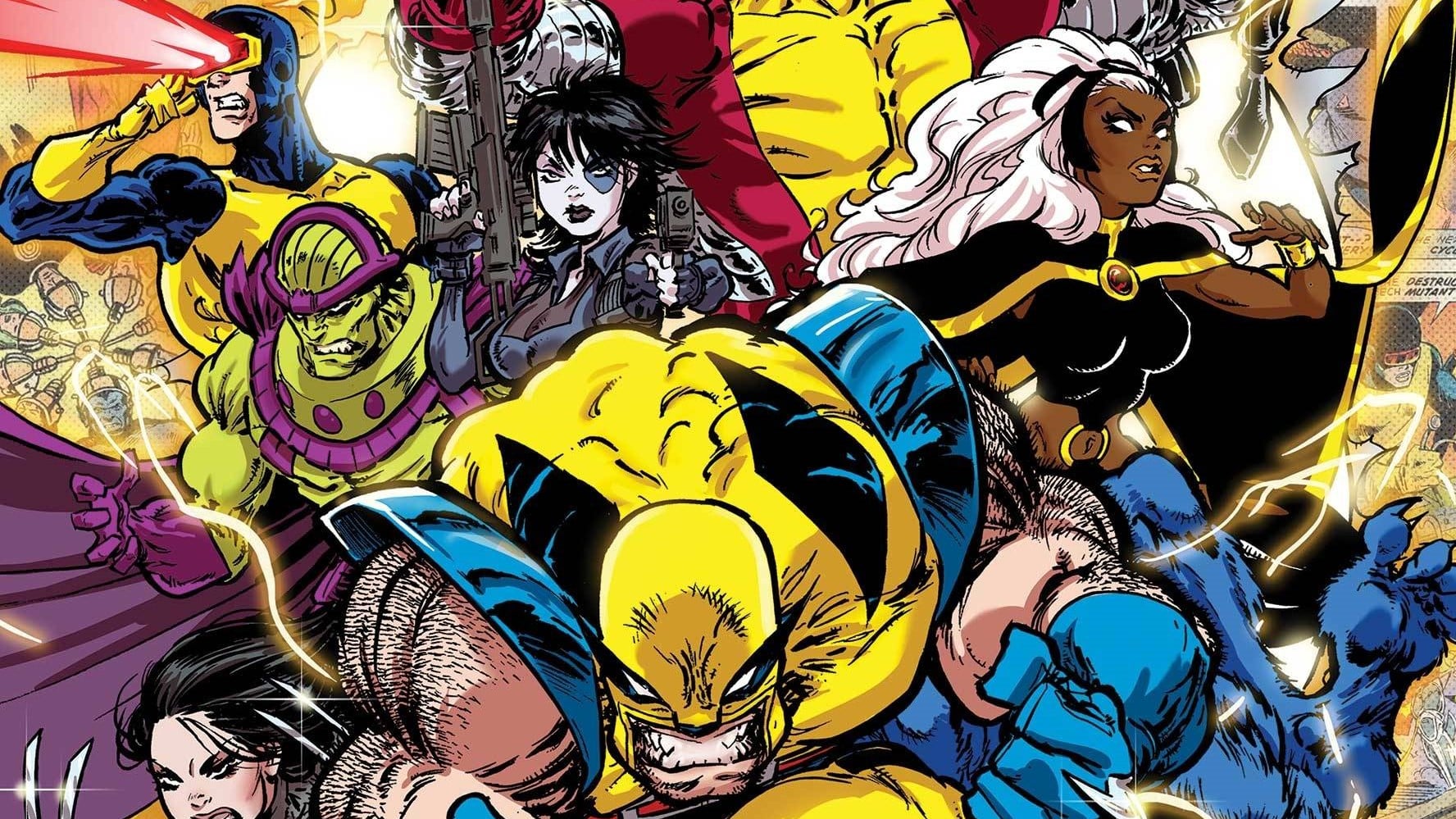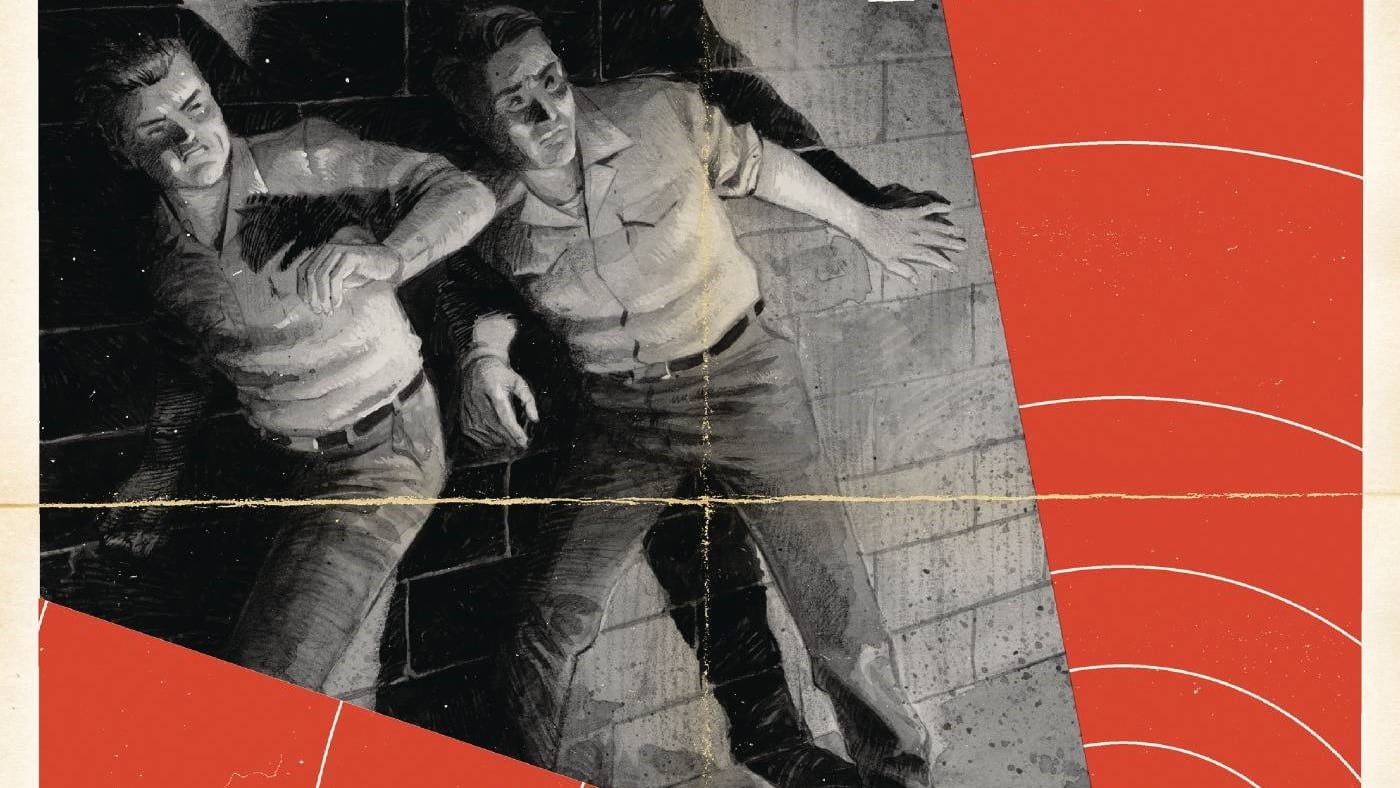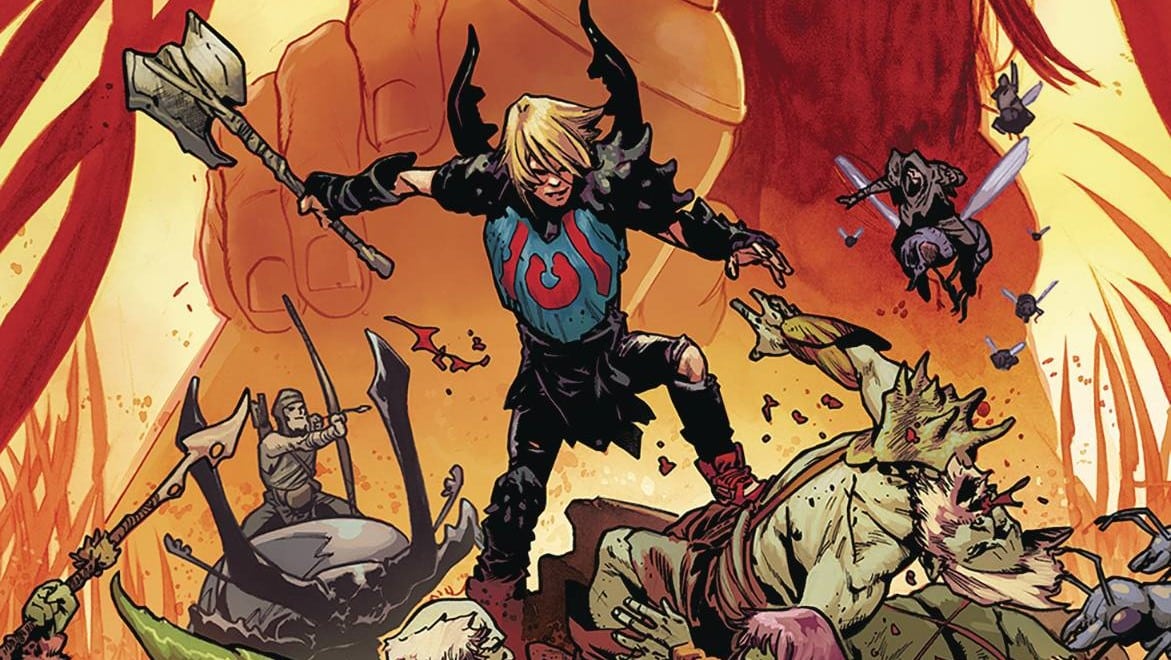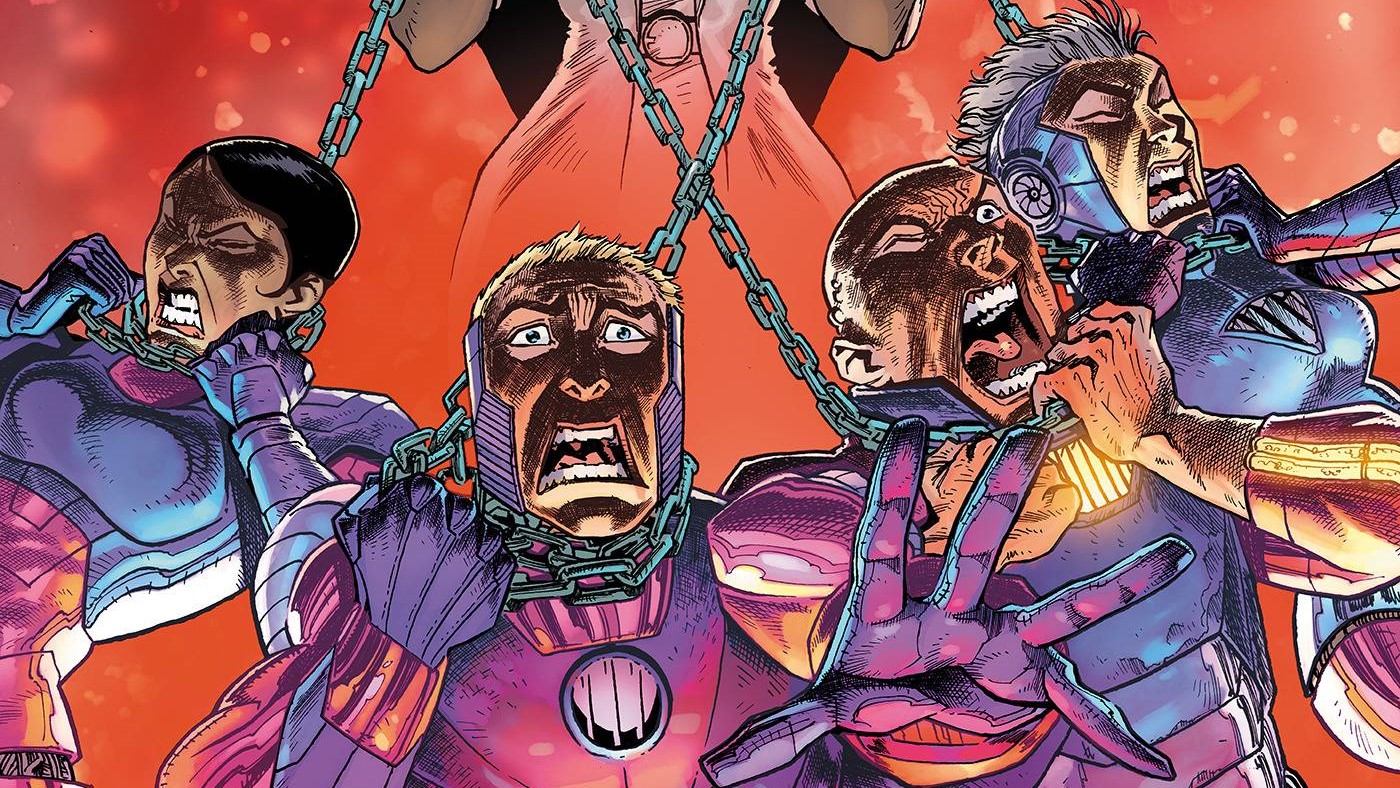Rascally Roy Thomas launches a new volume of tales from the X-Men’s past with a rookie Wolverine teaming up with…Jack O’Diamonds (?!?) in X-Men Legends (vol. 2) #1, written by Roy Thomas, drawn by Dave Wachter, colored by Edgar Delgado and lettered by Joe Caramagna.
X-Men Legends (vol. 2) #1 kicks off a new volume of the anthology series telling tales which dance between the raindrops of continuity featuring the work of high-profile creators from the X-Men’s greatest hits. Part of Marvel’s unofficial sub-line of “nostalgia comics”, this first issue begins the new volume in much the same way as most of the stories featured in the previous one: with a “legendary” creator in the form of a writer (paired with a present-day creator) telling a story which struggles to exist as anything more than an exercise in nostalgia and continuity.
Here, the series taps Roy Thomas, Stan Lee’s one-time protege and a genuine comic book (not just X-Men) legend, responsible for, amongst other things, keeping the flame of Golden Age characters alight, bringing Conan the Barbarian and Star Wars to Marvel, and creating Marvel’s What If?. Within the context of the X-Men, Thomas had two stints as the series’ writer, with his second one being far more fondly remembered, paired as he was with artist Neal Adams for a short run of significant issues which introduced Havok and Sauron, brought back the Sentinels, and presented a helmet-less Magneto for the first time.
Later, as Editor-in-Chief at Marvel, he played arguably an even bigger role in the history of the X-Men, helping shepherd the creation of what would become the “All New, All different” X-Men which debuted in Giant-Sized X-Men #1, and is credited as the co-creator of one of that group’s most popular characters, Wolverine.
It is in that era and with that character that X-Men Legends (vol. 2) #1 begins. Specifically, it opens amidst the closing pages of Wolverine’s first published appearance, the story which was first told across Incredible Hulk #180-182. While the original story was written by Len Wein and drawn by Herb Trimpe, here Thomas and artist Dave Wachter revisit the closing moments of that story, as Wolverine (in his original cute whiskered mask) tries to take down the Hulk, only to be called off by his Canadian superiors when he fails to do so in his allotted time (then and now, a cheap gimmick to keep the two ferocious foes from fighting ad nauseum).
It’s a curious decision on Thomas’ part – nearly half of this entire issue is comprised of this rehashing, more pages dedicated to the end of that fight than were originally used in Incredible Hulk #182, with Thomas even repeating some of Wein’s dialogue directly (an admittedly neat trick that helps ground the story in the continuity of the original while still raising the question of what, exactly, this is adding to that original story). Wachter adds a touch of modern dynamism to the scene relative to the original rendering by Trimpe, depicting the Wolverine/Hulk fight from some different angles and perspectives that help play up Wolverine’s rage and the mismatched power class between the two opponents, but nothing is so radically recontextualized or well-rendered to justify the amount of space dedicated to it.
Once Thomas and Wachter get away from the confines of that original Wolverine story, things pick up a bit as Thomas dives deeper into wider X-Men lore. Prompted by the events of “Secret Empire” (the original, a Steve Englehart-penned Captain America story which saw Cap targeted by an evil conspiracy led by President Richard Nixon, which also looped in the vast majority of known mutants at the time, including the then series-less original X-Men), Wolverine is tasked with a mission to acquire (i.e. kidnap) a pair of “extra-normals” the Canadian government has detected in New York. Thomas is at his strongest here, depicting a Wolverine who manages to strike a balance between his role as a wild and crazy loner in early “All New, All Different” X-Men stories and as a government agent put together enough to be trusted with carrying out a delicate mission (almost) on his own. Thomas also establishes a conflict – Wolverine wants out, but his superiors don’t want to let him go – which adds tension to the tale while also connecting with the character’s later history with his government, as depicted in those subsequent X-Men stories.
Thomas proceeds to pile on the continuity deep cuts by saddling Wolverine with a partner for this mission: Jack Winters, aka Jack O’Diamonds. Jack is a little-remembered mutant introduced in one of the “X-Men Origin” backup stories Thomas wrote during his first Silver Age X-Men run (in which the main stories were padded out with tales of the original X-Men first being recruited by Professor X). Long before Mister Sinister was inserted into his backstory, Jack O’Diamonds (a mutant with diamond-hard hands and mental powers, including limited teleportation because the Silver Age, who later transformed himself into a being made entirely of diamonds because, again, the Silver Age) was the first supervillain encountered by a young Cyclops. He tried to gaslight Cyclops into helping him acquire a super-villain doodad and ran afoul of Professor X, ending with Jack seemingly destroyed and Cyclops mustered as the first of Xavier’s X-Men. Thomas reveals in X-Men Legends (vol. 2) #1 that the Canadian government saved Jack from his apparent death and pressed him into service as an “extra normal” operative a la Wolverine.
The pair’s subsequent mission to the Brand Corporation (another continuity callback – this is the place where Beast got a job in the pages of Amazing Adventures following the cancellation of X-Men, where he first attained his gray/blue and furry form) comprises the conclusion of the issue, with most of the pages devoted to more bickering from Wolverine as he bristles against his unwanted (and largely shifty) partner. It’s true to character, but somewhat repetitive, given the first half of the issue featured Wolverine in much the same gear.

At this point, Thomas – one of the first of a generation of comic book creators who grew up reading comics as fans themselves – also lets his inner fanboy show (as it so often does in his writing), explicitly taking pains to cover any potential plot holes via dialogue. For example, at one point, the belt Jack received which detects mutants starts alarming, letting he and Wolverine know they are close to their target. But as they proceed to sneak into the Brand facility, Thomas is careful to have Jack explain to Wolverine that he’s now set the belt to “vibrate” to ensure no one will hear them coming. It’s not the worst bit of dialogue, but it sticks out as a very Roy Thomas one (a similar but more fun bit comes when Thomas also makes a point of reminding readers that adamantium is harder than diamond by having an irritated Wolverine plunge his claws into a shocked Jack’s diamond body).
The issue ends with the reveal that Wolverine and Jack O’Diamonds haven’t stumbled across two mutants, but rather, several: Iceman, Angel, Havok, Polaris, Blob, Unus the Untouchable, and Mastermind, all previous captives of the Secret Empire (and appearing here in their 70s era finest). It’s the perfect “Leonardo DiCaprio pointing at the TV” meme of a climax to an issue almost entirely built on “Leonardo DiCaprio pointing at the TV” memes. I’m certainly not immune to such things – Jack O’Diamonds is an admittedly impressive deep cut of continuity (it’s the character’s first appearance since 1996, and his first appearance outside a version of Cyclop’s origin story since 1991) – but an issue that gets by almost entirely on knowing winks to its audience does feel a little empty when it comes to a final appraisal.
Because ultimately, the best moments of X-Men Legends (vol. 2) #1 are those meme-like moments, the callbacks to X-lore, from Wolverine’s (very limited) pre-X-Men history to Jack O’ Diamonds’ return to using “Secret Empire” as the springboard of the plot. Everything else, unfortunately, is workmanlike at best and largely forgettable at worst: Wolverine’s fight with the Hulk at the beginning seems unnecessarily long, his later bantering/bickering with Jack too repetitive and one-note. To the issue’s credit, the story is exactly what it says on the tin, twenty odd pages with a legendary X-Men creator playing around in the lore of the series. If you’re someone with fond memories of this weird mid 70s era of the team (when they existed largely on the margins of the Marvel Universe via guest appearances), or someone with a deep, abiding fascination with X-Men history (like yours truly), there’s plenty to enjoy here. If you’re not, well, then there’s not a whole lot to recommend about it.
Austin Gorton also reviews older issues of X-Men at the Real Gentlemen of Leisure website, co-hosts the A Very Special episode podcast, and likes Star Wars. He lives outside Minneapolis, where sometimes, it is not cold. Follow him @austingorton.bsky.social.






